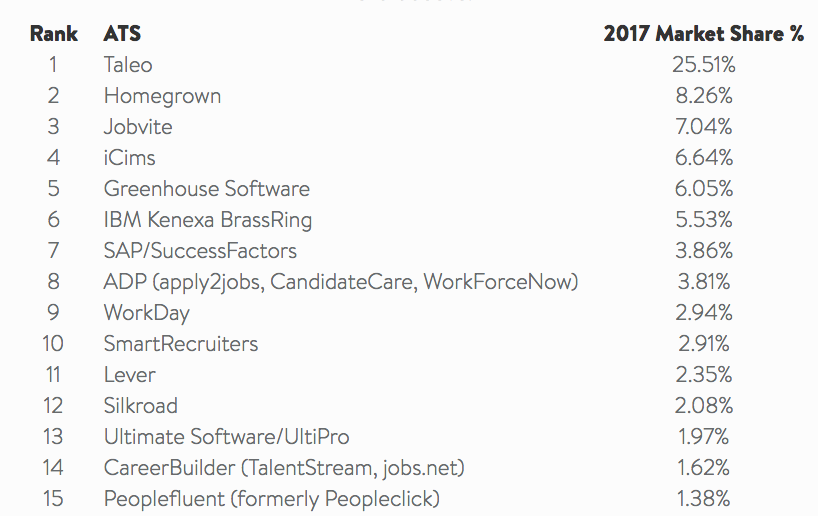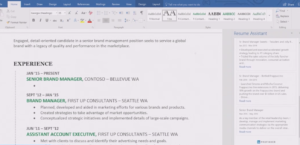Last week I sat down with the folks at iCIMS to take a look at their system. iCIMS is the second largest ATS/ talent platform by market share for enterprise-level organizations, with only Taleo (Oracle) being larger. Workday, Ultimate Software, IBM/Kenexa, and SAP/SuccessFactors are also large players in this space that are growing quickly.
Do you see what all of them (except iCIMS) have in common?
That’s right, all of those other ATSs are apart of full suite focused HCM products.
Does that make a difference? Yes.
The people selling you full HCM (Oracles, SAP, Workday, IBM, etc.) will tell you all of the advantages of having all of your data under one umbrella in using one fully integrated system.
What they won’t tell you is that they really specialize in HCM and that their talent acquisition products/modules are probably 2-3 years behind where modern-day ATS systems are at. Also, with cloud-based, open API ATS systems, getting data to sync between your ATS and your HCM is no longer something that is difficult.
Enterprise level HCMs are built for large/giant level sized organizations. Those organizations with thousands, if not millions, of employees, do have some unique challenges, and all of these HCMs do a great job at addressing those needs. So far, they don’t do a great job at doing that on the talent side of the business.
This is where iCIMS comes into play. iCIMS is one of the few ATSs on the market built for enterprise and the specific ATS needs of large organizations. iCIMS has the background and experience of dealing with the compliance and volume of large hiring, coupled with a much more robust talent engine then you’ll find with the vanilla talent offerings that are currently being peddled by enterprise HCM vendors.
iCIMS also has a fully integrated marketplace that allows each organization to tailor what functionality they want and need. From background check providers, pre-hire assessments, video interviewing, texting, etc. These aren’t bolt-on technologies, but fully integrated, one-experience technologies you can choose from based on what functionality your organization needs, that isn’t already built into the main iCims products.
iCIMS has three main products: their ATS (Recruit) which is used by 100% of their clients, Connect (their CRM) used by about a quarter of their clients currently, but growing quickly, and Onboarding used by about half of their clients. iCIMS has also recently updated and improved their user-interface (UI) to make it look like many of the new ATSs on the market.
One major complaint I have with HCM ATS products right now (one of many) is the fact that almost all force candidates to register into the system to apply. This added friction into the apply process has been shown to be something candidates hate and causes massive candidate drop off. iCIMS gives organizations many options on how to handle this issue, and lets you decide how you want candidates to apply, allowing to eliminate as much of that friction as possible.
iCIMS also has an entire development team focused on Google for Jobs. Why is this important? Because you need your job postings to match as closely as possible to the GFJ schema to ensure your jobs are getting the highest candidate traffic possible.
Ultimately, if you are an enterprise organization you need to run an ATS that can handle enterprise-level demands. The big question is, do you want to run an ATS that helps you hire better and faster, or one that is just part of an overall larger system, not specifically designed to higher better and faster?
I think we are quickly approaching an HR Tech environment in our organizations where we need two major systems. You need a great HCM to handle your day-to-day employee HR related work. You need a great Talent Platform (Sourcing, CRM, ATS, etc.) to handle your talent attraction and hiring work. There is currently not one HCM on the market that does talent acquisition as well as stand-alone talent platforms can do it. And by the time they get to be equal to current stand-alone ATS platforms, they’ll still be behind, because those systems keep advancing at a very fast pace.
So, if you’re using an HCM platform to run your talent, what you’re basically saying is hiring the best talent really isn’t that important to us. You can tell yourself something different, but either you’re using great TA technology, or you’re not.


